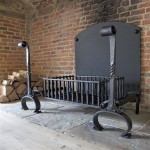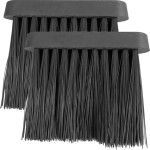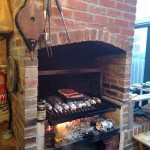Insulating Gas Fireplace Inserts: Maximizing Efficiency and Comfort
Gas fireplace inserts offer a convenient and aesthetically pleasing heating solution for homes. Replacing an existing drafty fireplace with a gas insert can significantly improve energy efficiency and provide a more consistent and controllable heat source. However, even with a modern gas insert, proper insulation plays a crucial role in maximizing its performance and ensuring lasting comfort within the living space. Insulating a gas fireplace insert is not simply about stuffing insulation around the appliance; it’s a systemic approach that considers safety regulations, airflow, and the specific construction of the fireplace and insert.
The primary goal of insulating a gas fireplace insert is to minimize heat loss. Without adequate insulation, heat generated by the insert can escape through the surrounding masonry or framing, reducing the overall effectiveness of the heating system. This heat loss translates directly to higher energy bills, as the insert must work harder and consume more fuel to maintain the desired room temperature. Furthermore, insufficient insulation can lead to cold spots near the fireplace, diminishing the comfort and usability of the immediate area. By properly insulating the gas fireplace insert, homeowners can optimize energy efficiency, reduce heating costs, and create a more comfortable and inviting living environment.
Understanding the Components of a Gas Fireplace Insert Installation
Before delving into the specifics of insulation, it is necessary to understand the key components involved in a typical gas fireplace insert installation. These components influence the insulation process and dictate the types of materials that can be safely and effectively used.
First, the firebox, the cavity within the existing fireplace that houses the gas insert, is a critical area to consider. The firebox is typically constructed of brick, stone, or metal, all of which are poor insulators. Sealing any cracks or gaps in the firebox is the first step in reducing heat loss. Next is the gas insert unit itself, a self-contained heating appliance that sits within the firebox. It's important to maintain proper clearances around the unit to allow for adequate ventilation, as specified by the manufacturer.
A flue or vent pipe is connected to the gas insert and extends up through the chimney to exhaust combustion gases. The type of flue pipe and its installation are crucial for safety and performance. The flue pipe must be appropriately sized and constructed to prevent leaks and ensure proper ventilation. The space around the flue pipe is another critical area for insulation. Finally, the surround or faceplate is the decorative trim that covers the edges of the insert and integrates it with the existing fireplace opening. The surround can also play a role in directing airflow and preventing heat loss.
Selecting Appropriate Insulation Materials
Choosing the correct insulation material is paramount when insulating a gas fireplace insert. Not all insulation materials are created equal, and some are specifically designed for high-temperature environments. Using the wrong type of insulation can create a fire hazard or release harmful gases. Always consult local building codes and the gas insert manufacturer's instructions before selecting any insulation material.
Rock wool, also known as mineral wool, is a popular choice for insulating gas fireplace inserts. It is made from natural or synthetic minerals and is highly resistant to heat, fire, and moisture. Rock wool insulation typically comes in batts or rolls and can be easily cut and fitted around the insert and flue pipe. It is non-combustible and does not release harmful gases when exposed to high temperatures. Another option is ceramic fiber insulation, which is a lightweight and highly effective insulator. It is often used to line the firebox and create a thermal barrier between the insert and the surrounding masonry. Ceramic fiber insulation is also resistant to high temperatures and does not shrink or degrade over time.
Avoid using fiberglass insulation in direct contact with the gas insert or flue pipe. Fiberglass is flammable and can release harmful particles when exposed to high heat. While it can be used to insulate areas further away from the heat source, it should be carefully installed to prevent any contact with hot surfaces. Spray foam insulation is generally not recommended for insulating gas fireplace inserts due to its flammability and potential to off-gas when exposed to high temperatures. Some manufacturers may allow the use of specific closed-cell spray foam products, but always verify with the manufacturer and local building codes before applying any spray foam insulation.
Proper Installation Techniques for Effective Insulation
The effectiveness of insulation depends not only on the material used but also on the quality of the installation. Proper installation techniques are crucial for ensuring that the insulation performs as intended and does not create any safety hazards. The installation process should begin by thoroughly cleaning the firebox and removing any debris or loose material. Any cracks or gaps in the firebox should be sealed with high-temperature caulk or mortar. This prevents air leaks and improves the overall insulation performance.
When installing batt insulation, it should be cut to fit snugly around the gas insert and flue pipe, avoiding any gaps or compressions. Compression can reduce the insulation's effectiveness. Rock wool batts can be held in place with metal mesh or wire to prevent them from shifting or falling. Ceramic fiber insulation can be cut and shaped to fit the firebox walls, creating a continuous thermal barrier. It can be secured with high-temperature adhesive or mechanical fasteners. Ensure that all insulation materials are kept away from the pilot light, burner, and other critical components of the gas insert. Maintaining proper clearances is essential for safe and efficient operation.
Pay close attention to the area around the flue pipe. This is a common area for heat loss, so it is important to insulate it thoroughly. Use a flue pipe insulation wrap or a pre-insulated flue pipe to minimize heat transfer. If using a wrap, ensure that it is properly secured and does not obstruct airflow. After installing the insulation, carefully inspect the area to ensure that there are no gaps, compressions, or potential fire hazards. Double-check all clearances and verify that the insulation is properly secured. A professional inspection is highly recommended to ensure that the insulation is installed correctly and meets all safety regulations. A poorly insulated gas fireplace insert can negate the benefits of a modern, efficient appliance. By understanding the importance of insulation, selecting appropriate materials, and employing proper installation techniques, homeowners can maximize the performance and comfort of their gas fireplace insert while minimizing energy costs.

Electric Fireplace Insulation An Ultimate Guide Inserts Guy

Walls Behind Fireplaces Building America Solution Center
Insulation Around A Fireplace Insert Hearth Com Forums Home

Choice Insulation Fireplaces

Rutland 10 Ft X 1 2 In Fiberglass Fireplace Insert Insulation 105 The Home Depot

Chimney Liners Usa Fireplace Insert Venting Information

Rutland 10 Ft X 1 2 In Fiberglass Fireplace Insert Insulation 105 The Home Depot
Insulating Around Direct Vent Fireplace Hearth Com Forums Home

How To Insulate Prefab Chimney Interior Wall Greenbuildingadvisor

Contemporary Gas Fireplace Inserts Provide Several Benefits Kozy Heat Fireplaces








